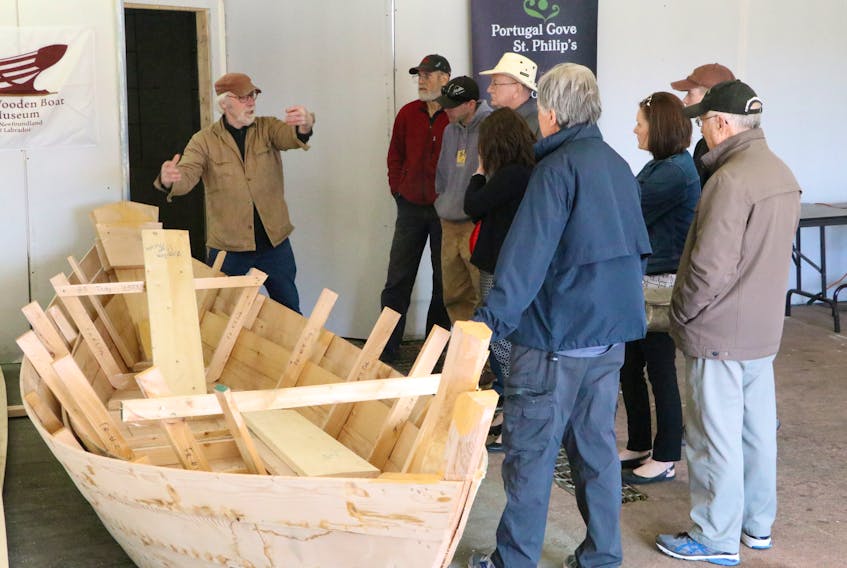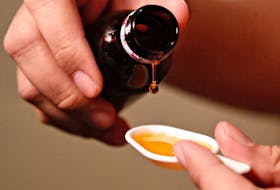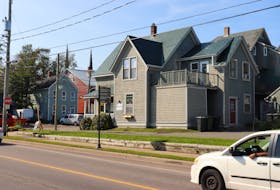I remember when I was quite young the family’s old fishing skiff being in the back garden — the one my grandfather, father and uncle had fished in off Cape Bonavista many years before.
It was set there as if marking the end of a continuous line of fishing for our branch of the Whiffens since they first settled in Bonavista hundreds of years before from England.
The old skiff, built by my family with the help of neighbours, I presume, would never see the salt water again. It sat there with the grass growing long around it, its white paint chipped and peeling, the planks dried out and oakum falling from the widening seams.
For a while it amused us children, as we climbed inside where so many cod had been pulled in, acting out wild at-sea adventures.
Nothing was wasted in those days, and in time it would be broken apart for splits and firewood for the homemade iron stove in the store (which is called a shed nowadays).
I always thought it would be interesting to build my own boat, but never took the time to even learn where to start — until now.

On Monday, as a Telegram reporter, I took part in a wooden boat-building workshop hosted by the Town of Portugal Cove/St. Philip’s and put off by the Wooden Boat Museum of Newfoundland and Labrador.
Jim Dempsey, president of the Wooden Boat Museum, said the town needs new dories for its town-organized regatta, and so it was decided the museum would put off a dory-building workshop in the town. People could sign up for the workshop for a day or for the week (at $75 for a day, $300 for the week) and learn the traditional way to build a wooden dory.
The two dories resulting from the workshop would be ready for the town’s June 30 regatta.
Dempsey explained to those taking part on Monday that the Wooden Boat Museum of Newfoundland and Labrador is a not-for-profit corporation operating as professional archivist, conservator, exhibitor and transmitter of the province’s knowledge and history of wooden boats, their economic use and contribution to community life. The museum and organization’s headquarters are in Winterton.
Dempsey said the museum records the knowledge, skills and stories associated with wooden boats built and used across the province, whether dories, punts or rodneys.
“We are pleased to have this space here to hold the workshop,” he said. “The dories we are building are 13-foot bottoms (17 feet from stem to stern). They are a little bit shorter than the Grand Banks dories.”
The workshop was held in garage space provided by Landings Seafood House on the Portugal Cove wharf, which is also offering daily lunch for the workshop participants.
On Monday afternoon, master boat builder Jerome Canning started right in on explaining what the workshop would entail, the kind of wood being used — pine and spruce — and the different parts that would be constructed to piece together a dory.

“We start from the bottom up,” he said, as participants helped him lay out planks for the bottom of a dory. “Our approach to construction is to follow tradition.”
Soon after the chips started flying as long planks were planed to the desired thickness, templates of the bottom were laid across the planks, and wood set aside for the stem, counter (stern), ribs and support cleats.
Later, epoxy and biscuits would be used to secure pieces of wood together that would make the counter and stem.
The wood being used at the workshop is wood that can be purchased at hardwares stores. Some boat builders in the province, however, still like to be completely true to tradition and cut their own wood to build boats, something that can be time-consuming.
Canning noted, however, that years ago most fishermen had no choice but to cut the wood themselves, and that fishermen worked with what they had and could get to build their boats.
“One thing to remember while you are constructing a boat on land, it is being constructed for use on the water,” Canning said. “Don’t slap your wood around. All that is keeping you from the water is the wood. Always respect the wood you are working with, because it’s your life that’s depending on it.”
In addition to learning and preserving the skills Newfoundlanders and Labradorians used to build wooden boats, the museum collects and records oral stories from boat builders, fishermen and outport families, and takes a close look at the skills and the techniques used.
As the week progresses, participants will learn and take part in how a traditional sturdy, wooden dory takes shape and is prepared for use in the ocean.









